Fridtjof Nansen Frigates Replacement [Norway]
Last reviewed: 1st September 2025
Snapshot
In 2022, the Norwegian government announced a 9.8% year-on-year planned increase in the national defence budget to NOK75.8 billion. The budget document highlighted the need to consider replacing the current surface vessels. According to a 2023 report by the Norwegian Defence Commission, Oslo, together with a partner nation, could acquire up to six new frigates under a $9.5 billion procurement programme. In April 2024, Norway announced its new long-term 2025-2036 defence plan, which will see an increase of almost $60 billion in defence spending by 2036. In order to strengthen the navy, a minimum of five new frigates are planned to be procured.
In August 2025, the Norwegian Navy announced it had awarded a £10 billion ($13.5 billion) contract to BAE Systems for its Type 26 frigates.
Summary
- Programme value:
- $13.5 billion (Reported)
- Units required:
- 5 (Actual)
- Award year:
- 2025
- Status:
- Contracted/Awarded
- Type:
- Procurement - new
- Systems:
-
City Class (Type 26) - Successful
Constellation Class FFG(X) - Unsuccessful
MEKO A-400 Air & Missile Defense (AMD) - Unsuccessful
Admiral Ronarc'h Class (FDI) - Unsuccessful
Anti-Submarine Warfare Frigates (ASWF) - Unsuccessful
Bonifaz Class (F-110) - Unsuccessful
- Unit cost:
- $1.6 billion (Estimated)
- PGO:
- 100% ?
Summary
- Programme value:
- $13.5 billion (Reported)
- Units required:
- 5 (Actual)
- Award year:
- 2025
- Status:
- Contracted/Awarded
- Type:
- Procurement - new
- Systems:
-
City Class (Type 26) - Successful
Constellation Class FFG(X) - Unsuccessful
MEKO A-400 Air & Missile Defense (AMD) - Unsuccessful
Admiral Ronarc'h Class (FDI) - Unsuccessful
Anti-Submarine Warfare Frigates (ASWF) - Unsuccessful
Bonifaz Class (F-110) - Unsuccessful
- Unit cost:
- $1.6 billion (Estimated)
- PGO:
- 100% ?
Bids and suppliers
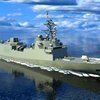
Vard - Constellation Class FFG(X) - NORWAY
Unsuccessful




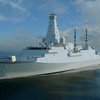
BAE Systems Maritime – Naval Ships - City Class (Type 26) - UK
Successful



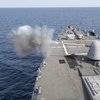


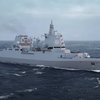
TKMS - MEKO A-400 Air & Missile Defense (AMD) - GERMANY
Unsuccessful




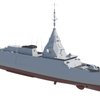
Naval Group - Admiral Ronarc'h Class (FDI) - FRANCE
Unsuccessful



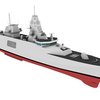
Damen Schelde Naval Shipbuilding - Anti-Submarine Warfare Frigates (ASWF) - NETHERLANDS
Unsuccessful



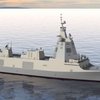
Navantia - Bonifaz Class (F-110) - SPAIN
Unsuccessful



Additional Information
Programme Background
Requirements
The Royal Norwegian Navy has four Fridtjof Nansen-class frigates. Five were originally built and delivered, but one sank in November 2018. Shephard forecasts that the Fridtjof Nansen-class frigates will need to be replaced starting from the early 2030s, given that the lead ship entered service in 2006 and no life-extension works have been carried out so far.
Considering the limited AAW weapons (only 8 VLS cells in three out of four frigates) and changing threat scenarios, the Norwegian Navy could look at more capable warships.
According to the plan released in April 2024, Norway will acquire a minimum of five blue water frigates capable of contributing to the full spectrum of maritime operations. The frigates will be procured, operated, and maintained in partnership with a close ally. The choice of acquiring the ships in cooperation with an ally, therefore mirroring the Tyep 212CD programme with Germany, allows for the shortening of the development and construction cycle.
Timeline
The Norwegian government, on 6 October 2022, announced a 9.8% year-on-year planned increase in the national defence budget to NOK75.8 billion. The budget document highlighted the need to start considering replacing the current surface vessels.
In particular, although the Fridtjof Nansen-class frigates are expected to undergo life-extension works to keep them in service until the mid-2030s, the document underlined how there is uncertainty around such works due to costs. In addition, the 2023 budget proposal stated that 'the upgrade of the frigates will be seen in connection with the phasing in of a new surface structure'.
Thus, it is fair to assume that discussions are taking place regarding whether to update the existing frigates or invest in a new class of vessels. Should Olso decide to halt the modernization programme, new ships will be needed in the early 2030s.
In March 2023, Norwegian media outlet VG reported that the Royal Norwegian Navy expressed the intention to procure new frigates instead of updating the in-service ones. Norwegian Navy Vice Admiral Rune Andersen told VG that a joint shipbuilding solution is currently being evaluated.
In May 2023, the Norwegian Defence Commission published a report recommending procuring six new frigates. The document described Norway's highly challenging security environment. It proposed a significant increase in defence spending: an immediate increase of the defence budget by approximately NOK 30 billion ($2.85 billion) to bolster personnel and fill stocks of ammunition and a NOK 40 billion ($3.8 billion) investment per year over a ten-year period for increased investments in military equipment.
The report emphasized the importance of the maritime sphere for the country. In particular, the document stresses that Norway needs enough vessels to patrol its borders and participate in the missions in the broader NATO framework. In this context, the Commission suggests that the number of frigates should be increased to six through the joint procurement of platforms with a foreign allied nation.
A Norwegian MoD report on future defence acquisitions (Future Acquisitions for The Norwegian Defense Sector 2023–2030) released in May 2023 features information regarding the "New surface vessel structure" project. According to the document, the purpose of the project is to replace the capacity currently comprised of frigates and corvettes. However, the project concept and scope have not yet been defined. Interestingly, the budget allocation is between $3 and $4.5 billion starting in 2029.
Shephard understands an RfI for new corvettes and frigates was issued in May 2023.
On 6 April 2024, Norway announced its new long-term 2025-2036 defence plan, which will see an increase of almost $60 billion in defence spending by 2036. A total of $153 billion will be spent over the next 12 years, allowing Oslo to overcome the threshold of 3% of GDP invested into defence at the end of the abovementioned timeframe. The Norwegian government specifically reinforced its commitment to strengthening the navy, purchasing at least five new frigates with anti-submarine helicopters, five new submarines, up to ten standardised vessels and 18 smaller vessels.
Three to four contenders are expected to be shortlisted by the end of 2024/early 2025.
On 19 November 2024, Norway announced the downselection of France, the UK, Germany, and the US as possible partner countries for the procurement of the new frigates.
On 31 August 2025, Norway announced a £10 billion ($13.5 billion) contract had been awarded to BAE Systems for the procurement of its Type 26 frigates.
In December 2025, the UK and Norway signed the Lunna House Agreement. This agreement will see the two navies operate an interchangeable fleet of at least 13 Type 26 frigates.
Contenders & Bidders
Regarding the partnership with another country for the joint procurement of the frigates, Shephard notes that the De Zeven Provincien-class Replacement Programme could represent a suitable option for Oslo. However, other countries such as Denmark, Sweden and Germany are also looking to acquire new frigates under a similar timeline.
According to the Norwegian newspaper DN, likely contenders for the programme are the Constellation-class design, the Type 26, the Type 31, and the future German F127 frigate.
Fincantieri & Vard
Fincantieri confirmed to Shephard that it answered the May 2023 RFI together with its Norwegian subsidiary, Vard. Fincantieri is leveraging its experience in providing the Constellation-class frigates to the US Navy to provide the a FREMM based frigate to Norway.
In May 2025, Fincantieri Marine Group opened a new office in Oslo to enhance its communication with the Norwegian Government and its industrial partners.
Naval Group
In late January 2024, during a scheduled port call ahead of NATO's STDE24, a delegation of Norwegian officials was briefed onboard FREMM Bretagne about the capabilities of the Belh@rra frigates.
According to the French media outlet Mer et Marine, Norway has submitted an RFI to Naval Group regarding the FDI frigates.
Naval Group has the advantage of having a hot production line in Lorient - with three frigates already launched (one French and two Greek) - and the capability to deliver two ships per year.
In January 2025, France and Norway signed a Letter of Intent (LOI) for increased cooperation in maritime surveillance. This closer cooperation between the nations will place Naval Group in a strong position to pitch its FDI frigate design.
TKMS
In March 2024, the German Minister of Defence, Boris Pistorius, reportedly pitched to its Norwegian counterpart the future F127 frigate design. It is worth mentioning that Germany and Norway are already cooperating on the construction of a common class of next-generation submarines.
However, it is worth mentioning that the F127 will be primarily an AAW platform, while Norway is interested in an ASW ship.
In March 2025, during the UDT exhibition, TKMS signed a Letter of Intent (LoI) with the Norwegian shipyard Ulstein Verft. The agreement outlines that, in the event of a contract award for the next Norwegian frigate programme, substantial value creation will take place in Norway.
The TKMS and Ulstein bid would see the integration of domestic Norwegian subsystems into the design of the frigate, with the majority of the production of the frigates taking place within Norway.
Damen
The Anti-Submarine Warfare Frigate (ASWF) by Damen is also known to be considered a viable option for Norway, thanks to its ASW focus and the reduced crew.
BAE Systems
BAE Systems is reportedly pitching its Type 26 ASW frigate. The British manufacturer is considered a leading contender thanks to the long history of close defence cooperation between Oslo and London. The new "Frigate Factory" in Govan will also help BAE to expand its production capabilities.
The possibility of the UK and Norway both operating the Type 26 in the North Sea poses a unique opportunity for greater cooperation between the two neighbouring navies in ASW operations and the protection of critical underwater infrastructure in the North Sea.
It should be noted that if Norway requires the first ship to be delivered in 2029, BAE could divert some of the hulls originally intended for the Royal Navy to Oslo.
The Type 26 frigates will operate interchangeably with the City-class Type 26 frigates operated by the United Kingdom. Therefore, it can be assumed that these Type 26 frigates will be as identical as possible between the two fleets.
Navantia
Navantia, with its F-110 frigate design, is also expected to join the competition. However the loss of the Helge Ingstad after a collision with an oil tanker in 2018 may be enough to discourage Navantia from joining the competition. If not, it is likely the incident will heavily impact the credibility of Navantia's bid.
Contracts Award
On 31 August 2025, the Norwegian MoD announced a contract had been awarded to BAE Systems for its Type 26 frigate. The reported value of the contract is £10 billion ($13.5 billion).
Forecast Methodology
Quantity
According to the Norwegian newspaper VG, the Royal Norwegian Navy aims to procure six new frigates. This number coincides with what was indicated by the Norwegian Defence Commission report.
The Norwegian Chief of Defence, Gen Eirik Kristoffersen, recommended the country procure a minimum of four, but preferably six, new frigates in a June 2023 report to the government.
According to the April 2024 document, a firm order for five vessels is to be placed, with an option for a sixth.
Programme Value & Unit Cost
The 2023 report published by the Norwegian Defence Commission suggests that the procurement of six frigates could cost NOK 100 billion ($9.5 billion), with annual operational costs of around NOK 2 billion ($190 million). This yields an estimated unit cost of $1.6 billion. Shall five frigates be procured, the programme would have an estimated value of $7.9 billion.
By looking at frigate programmes recently awarded in Europe, such as the MKS 180 Programme, the Spanish F-110 programme and the French FDI programme, on average, the Norwegian programme appears to be more expensive. However, as noted, the abovementioned procurement projects were awarded a few years ago.
The contract awarded to BAE Systems on 31 August 2025 has a reported value of £10 billion ($13.5 billion), however this amount is yet to be confirmed by the Norwegian Ministry of Defence.
Programme Years
Given that, without the life extension works, the Fridtjof Nansen-class frigates are due for a replacement in the early 2030s, a decision needs to be taken around 2025/2026.
To estimate the programme years, the estimated unit cost has spread across the construction period of each vessel.
Construction & Delivery Timeline
Assuming a contract would be awarded in 2025, with an estimated three-year construction period, and with works beginning in 2026, the First of Class would be launched around 2029. Estimating one to two years between launch and commissioning, all ships are expected to enter service within 2035.
The goal of having the lead ship in service by 2029 seems difficult to achieve, although it should be considered that Naval Group and BAE Systems could divert some of the hulls intended for the French Navy and the Royal Navy to Norway. Naval Group opted for a similar approach as part of the frigates' deal with Greece (see separate entry).
According to the Norwegian Government, the Type 26 vessels will be "as identical as possible, and have the same technical specifications, but the decision on what type of helicopter the Norwegian frigates will be operating has not yet been made."
Please note that this is a highly speculative timeline and may not represent the likelihood of the programme advancing at that speed.
Related Programmes
Large Standard Vessels [Norway]
Norway • Navy
In the 2023 Military Advice of the Chief of Defence, Gen Eirik Kristoffersen suggested that Norway should renew its maritime surface structure by rationalising the …
Medium Standard Vessels [Norway]
Norway • Navy
In the 2023 Military Advice of the Chief of Defence, Gen Eirik Kristoffersen suggested that Norway should renew its maritime surface structure by rationalising the …
Naval: Combat Management Systems | Fridtjof Nansen Frigates Replacement [Norway]
Norway • Navy
This subsystem requirement is for the Naval: Combat Management Systems part of the Fridtjof Nansen Frigates Replacement [Norway]. View platform programme here
Naval: shipboard communication systems | Fridtjof Nansen Frigates Replacement [Norway]
Norway • Navy
This subsystem requirement is for the Naval: shipboard communication systems part of the Fridtjof Nansen Frigates Replacement [Norway]. View platform programme here
Naval: shipboard communication systems | Large Standard Vessels [Norway]
Norway • Navy
This subsystem requirement is for the Naval: shipboard communication systems part of the Large Standard Vessels [Norway]. View platform programme here
Naval: Combat Management Systems | Large Standard Vessels [Norway]
Norway • Navy
This subsystem requirement is for the Naval: Combat Management Systems part of the Large Standard Vessels [Norway]. View platform programme here
Naval: Combat Management Systems | Medium Standard Vessels [Norway]
Norway • Navy
This subsystem requirement is for the Naval: Combat Management Systems part of the Medium Standard Vessels [Norway]. View platform programme here
Naval: shipboard communication systems | Medium Standard Vessels [Norway]
Norway • Navy
This subsystem requirement is for the Naval: shipboard communication systems part of the Medium Standard Vessels [Norway]. View platform programme here










